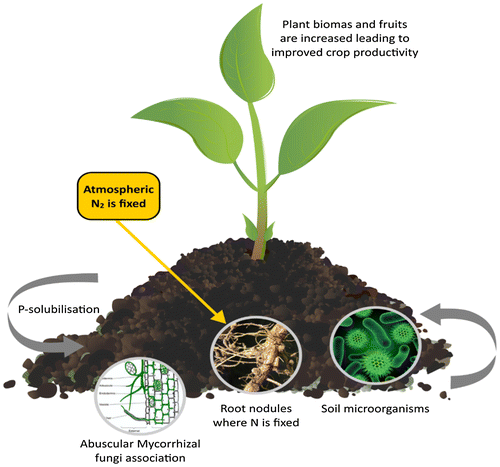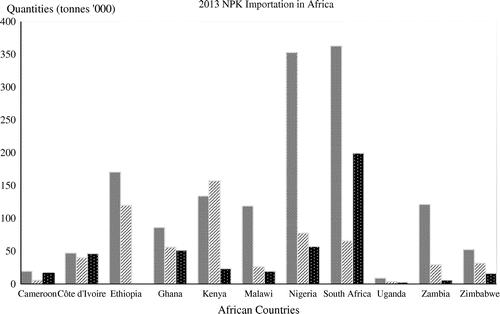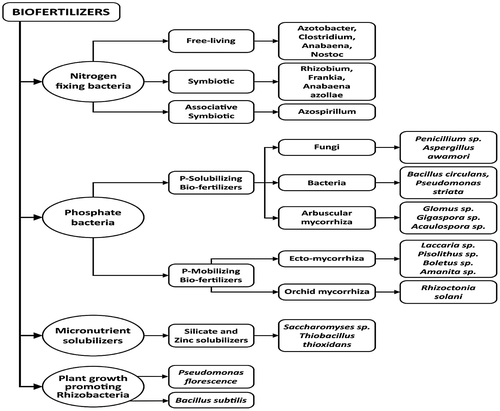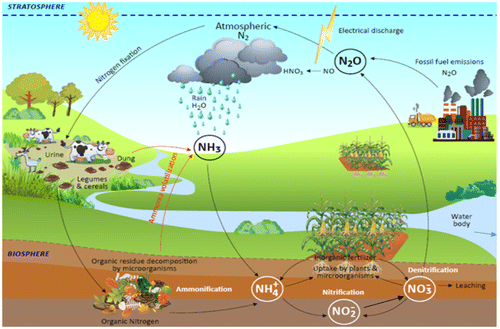Figures & data
Figure 1. Biofertiliser technology employs plant-microbe interactions in influencing plant growth and development.

Table 1. Illustrative information for average nutrients absorbed by crops causing a medium to high crop yield under fertile soil conditions. Soil testing was considered in arriving at the figures and the units are in kg of Nutrient per hectare
Figure 2. Nitrogen, Phosphorus and Potassium fertiliser importation in some African countries.

Table 2. Microbial composition of commercial biofertilisers and their function
Figure 3. Types of biofertilisers based on functional attributes.

Figure 4. Nitrogen cycle.

Figure 5. Soil microbes mediate phosphorus (P) availability for plant growth through solubilisation of inorganic P and mineralisation of organic P.

